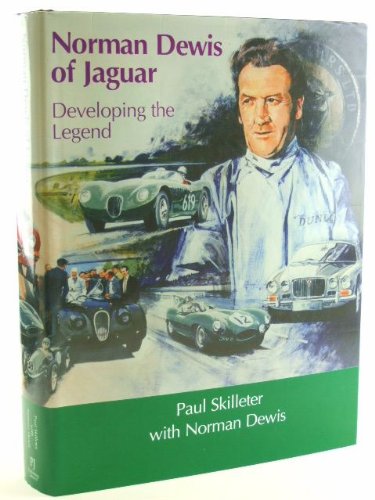
SIGNED BY NORMAN DEWIS
This is a story both of personal achievement and of a heroic period in Jaguar’s history. In a career spanning 33 years at Jaguar, Norman Dewis tested and developed a remarkable series of cars including:■ C-type ■ D-type ■ XK 140/150 ■ 2.4/3.4 and Mk 2 saloons ■ Mk VII/Mk VIIM ■ E-type ■ XJ13 ■ XJ/XJ-S ■ XJ40
Plus, he rode with Stirling Moss in a C-type in the 1952 Mille Miglia, drove a 190mph works D-type in the highly dramatic 1955 Le Mans, raced in the Goodwood 9 Hours, and set an amazing 173mph production car record at Jabbeke in Belgium with an XK 120. Completing over a million test miles at 100mph-plus average, Norman also played a crucial role developing the revolutionary Dunlop disc brake, and survived high-speed crashes and rollovers in the days before seat-belts – and without ever breaking a single bone.
This book is automatically also a development history of Jaguar, with a wealth of new technical details of how key models were evolved.Filled with personal insights and fascinating technical detail, this book tells the unique story of a great Jaguar character and the equally great cars he worked with.
Norman did not, of course, work in isolation and his recollections bring to life the unique team which made Jaguar great – company founder Sir William Lyons, engineering director Bill Heynes, development engineer Bob Knight, aerodynamicist Malcolm Sayer, and service department and race team manager Lofty England. These and many more become real people as Norman tells of his every-day involvement with them.
Norman’s proudest moment in the last decade was receiving the MBE in 2015, a fitting recognition of his achievements for Jaguar and the British motor industry – for both of which he remains a great ambassador
If anyone was at the heart of Jaguar during perhaps its most remarkable decades of achievement, it was Norman Dewis. Read this book and you will absorb the authentic flavour of Jaguar in Coventry and fully appreciate the achievements of a remarkable man.
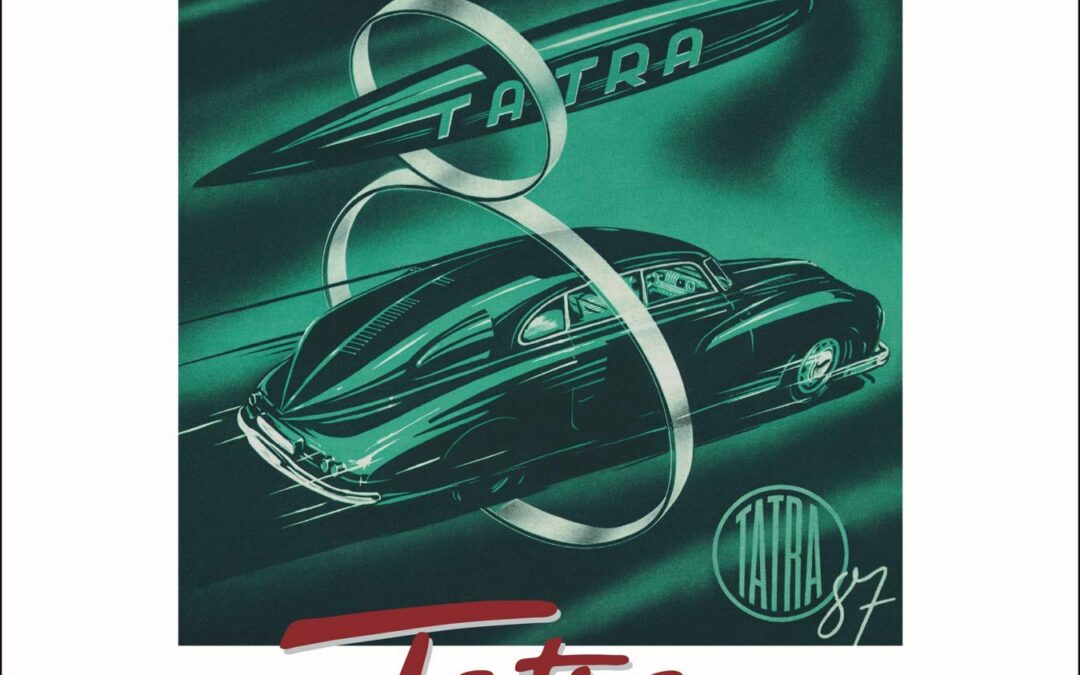
Tatra – The Legacy of Hans Ledwinka is the story of the Tatra company, which originated in the Central European country of Czechoslovakia. It is a tale of great innovation and avant-garde design in automobile engineering. It is also the story of one man – Hans Ledwinka – and his visionary concepts which have become highly influential, although often undervalued, contributions to the development of car technology.
Until now, Hans Ledwinka’s talent has hardly been recognised; in retrospect, he can be judged equal to car designers such as Benz, Daimler and Porsche, whose endeavours have been fully recorded many times over. With his revolutionary Tatra cars, Ledwinka consistently pushed back the frontiers of automobile construction, and it’s certain that without his inspiration, the Volkswagen in its air-cooled rear-engined form would perhaps never have been conceived. This book suggests that Ledwinka played a greater part in this development than has previously been appreciated.
The authors have covered the full history of the Tatra company, which is one of the oldest factories in continuous automobile manufacture, dating back to the 19th century. By doing this, they have placed both Ledwinka and the Czechoslovak Tatra company in their rightful place in the history of car design, and provided a fully comprehensive assessment of the influence of Tatra car designs and their inspired creator.
The text of this larger format 2nd edition has been fully revised and updated since the 1990 edition. This new edition also contains many additional illustrations. The book also has a new foreword, written by Norman Foster, the British architect, and proud owner of a Tatra T87, who pays tribute to the aesthetic qualities of this design classic and captures the fascination of both designers and motor historians with the development of Tatra.

Three quarters of a million people are in a plane somewhere right now. Many millions travel by air each day. For most of us, the experience of being in an airport is to be endured rather than appreciated, with little thought for the quality of the architecture. No matter how hard even the world’s best architects have tried, it is difficult to make a beautiful airport.
And yet such places do exist. Cathedrals of the jet age that offer something of the transcendence of flight even in an era of mass travel and budget fares. Here are twenty-one of the most beautiful airports in the world.
The book features:
Wellington International Airport, ‘The Rock’ shaped like the dangerous cliffs of a local legend
Kansai International Airport, Renzo Piano’s gigantic project built on three mountains of landfill
Shenzhen International Airport, a manta ray shaped terminal putting this booming region on the map
Daocheng Yading Airport, the world’s highest civilian airport in the middle of the Tibetan mountains
Chhatrapati Shijavi International Airport, rising from the slums of Mumbai like a Mogul palace
Queen Tamar Airport, a playfully iconic modern airport nestled in the mountains of Georgia
King Abdulaziz International Airport, the gateway to Mecca resembling a Bedouin city of tents
Pulkovo Airport, mirroring the city of St Petersburg with bridges, squares and art
Berlin-Tegel Airport, ultramodernity, 1970s style
Copenhagen Airport, an icon from the golden age of air travel
Franz Josef Strauß Airport, sober and easy to negotiate, Munich’s model airport
Paris Charles du Gaulle Airport, the brutalist icon that launched the career of airport architect Paul Andreu
London Stansted Airport, Norman Foster’s return to the golden age of air travel
Lleida-Alguaire Airport, a relic of Catalonia’s early 21st century building boom
Madrid-Barajas Airport, Richard Rogers and Antonio Lamela’s calm, bamboo-panelled Terminal 4
Marrakesh Ménara Airport, a blend of 21st century construction and traditional Morrocan design
Santos Dumont Airport, Rio de Janeiro’s modernist masterpiece
Carrasco International Airport, Rafael Viñoly’s design inspired by the sand dunes of his native Uruguay
Malvinas Argentinas International Airport, echoing the mountains and glaciers of Tierra del Fuego
John F Kennedy International Airport, Eero Saarinen’s glamorous jet-age TWA terminal
Spaceport America, a vision of the future in the New Mexico desert

Tatra – The Legacy of Hans Ledwinka is the story of the Tatra company, which originated in the Central European country of Czechoslovakia. It is a tale of great innovation and avant-garde design in automobile engineering. It is also the story of one man – Hans Ledwinka – and his visionary concepts which have become highly influential, although often undervalued, contributions to the development of car technology.
Until now, Hans Ledwinka’s talent has hardly been recognised; in retrospect, he can be judged equal to car designers such as Benz, Daimler and Porsche, whose endeavours have been fully recorded many times over. With his revolutionary Tatra cars Ledwinka consistently pushed back the frontiers of automobile construction, and it’s certain that without his inspiration, the Volkswagen in its air-cooled rear-engined form would perhaps never have been conceived. This book suggests that Ledwinka played a greater part in this development than has previously been appreciated.
The authors have covered the full history of the Tatra company, which is one of the oldest factories in continuous automobile manufacture, dating back to the 19th century. By doing this, they have placed both Ledwinka and the Czechoslovak Tatra company in their rightful place in the history of car design, and provided a fully comprehensive assessment of the influence of Tatra car designs and their inspired creator.
The text of this larger format 2nd edition has been fully revised and updated since the 1990 edition. This new edition also contains many additional illustrations. The book also has a new foreword, written by Norman Foster, the British architect, and proud owner of a Tatra T87, who pays tribute to the aesthetic qualities of this design classic and captures the fascination of both designers and motor historians with the development of Tatra.
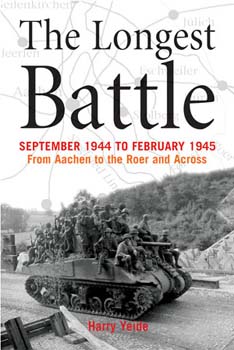
In the early afternoon of September 12, 1944, an American patrol entered Nazi Germany southwest of the ancient city of Aachen. Three months after the landing at Normandy, the Allies were finally within reach of the enemy on his home turf. Among the troops there was even talk of getting home for Christmas. What followed, though, was one of the most grueling campaigns of the war—the nearly six-month-long battle fully recounted for the first time in this powerful work. Combining stirring narrative and meticulous historical detail, The Longest Battle provides a complete and compelling account of what happened after the first breach of the Third Reich by Allied ground combat forces: of the troops’ terrible struggle across the Siegfried Line, Hitler’s vaunted West Wall, through the benighted Hurtgen Forest, and across the Roer. The strategic decisions and setbacks, the incremental advances, and catastrophic losses that marked this still-controversial but critically important battle unfold in all their historical, military, and human significance in Harry Yeide’s book—finally filling a gap in our understanding of World War II.
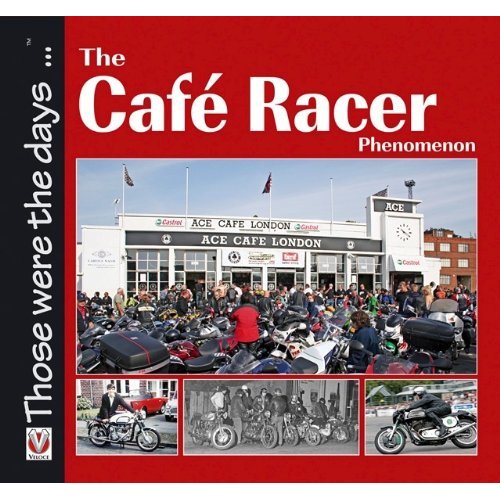
The Cafe Racer is one of the most enduring styles of motorcycle ever created, capturing the rebellious spirit of the 50s. From original Triton-building Rockers to modern-day Sunday riders on Thruxton 900s, there are thousands of enthusiasts across the world who aspire to own a road burner with old school class. This is a look back at the glory days of the Cafe Racer, from Friday night dices on the North Circular, through the street specials craze of the Seventies, to the modern day revival. This book includes interviews with some of the old school regulars at the Ace Cafe, and an in-depth look at the great British bike builders like Norman Hyde, Steve and Lester Harris, the Rickman brothers and Paul Dunstal, Featuring a huge, global Cafe Racer directory – listing specialist builders, spares suppliers, websites etc – alongside a unique mix of personal memories, unseen photos, iconic machines and chassis builders in profile, this book is a must for any ton-up rider.
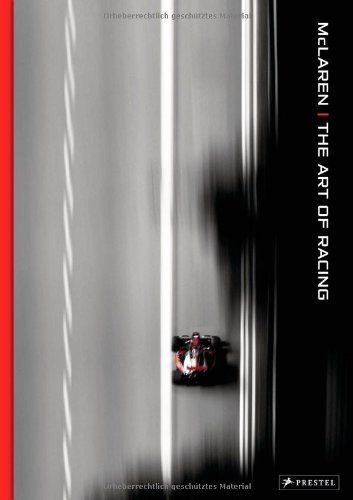
“The McLaren racing team takes readers inside the organization that makes and drives the fastest cars on the planet. With a brand new $300 million track opening in the 2012 season in Austin, Texas, the time has never been riber to learn the Art of Racing with McLaren. In the world of Formula One, the name McLaren is synonymous with precision, professionalism, and speed, but most of what the public knows about McLaren takes place on the raceway and in the pit stops. Focusing not just on champion drivers Lewis Hamilton and Jenson Button, Grand Prix action and the race-day engineers, but the vast team of experts it takes to bring this global brand to the races, this lavishly illustrated book takes readers behind the scenes at the £40M Norman Foster-designed McLaren Technology Centre to capture not just the people and the cars, but the testing and technology behind the world’s most successful F1 team. Granted unprecedented access to the inner workings of McLaren on and off the race-track, photographer Darren Heath and F1 rxpert Maurice Hamilton trace the evolution of a racing car from the moment of conception on the computer screen to the final race at the end of the season. The story they tell is as colorful and exciting as a Grand Prix itself.
“

The names ‘Keith Duckworth’ and ‘DFV’ are practically synonymous, such is the reputation of the famous F1 racing engine which he designed.
Whilst there are books covering the technical aspects of the DFV engine, and other designs from Cosworth, the company which he founded with Mike Costin, there are many gaps in the story of Duckworth’s career, before and after Cosworth. This book comprehensively fills those gaps, taking the reader into the world of Britain’s finest 20th century engineers.
It was a world consisting of far more than motorsport, embracing an astonishing variety of mechnical devices, including aircraft, boats, and motorcycles – particularly Triumph, for whom he was a consultant during his retirement.
A man of strong convictions and high integrity, Keith Duckworth OBE cared passionately about his work, fitting almost every aspect of his life around it. His northern industrial roots, the ups and downs of his personal life, his health problems, and his generous support of charities and business start-ups, combine to create the story of one of motorsport’s – and engineering’s – most endearing and enduring characters.
Foreword by Sir Jackie Stewart OBE.










